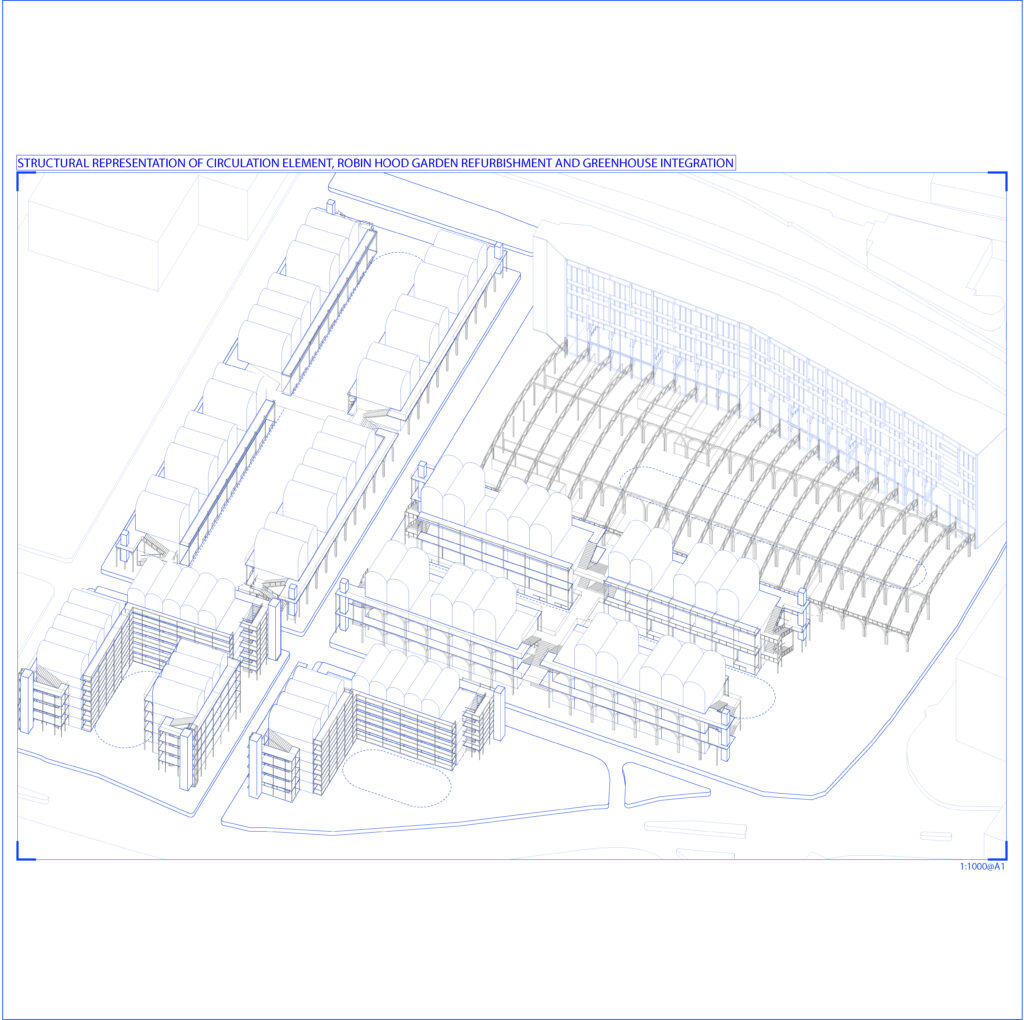Future Memory
The area has met a drastic moment of change. Demolition process of the Smithson’s building equals to an elimination of the history. Robin Hood Gardens have been overlooked and didn’t seem to fulfil a happy story of the community gathered around. The building was part of mass emergence of a housing scheme with the demand that was raised after severely damaged city by the 2 World War.
However, historically related architecture can have a special impact on the society. It identifies the location and its traditions that have been followed throughout time. History adds cultural value to the architecture which can become a space where people learn about the identity of the place.

Therefore, running counter to the demolition process, a “new wing” will be added to the original building. Along with the existing, a new housing scheme is developed, based on the historical research in the Docklands area.
The project brings back memory on the site, where design decisions will be supported and inspired by the historic study of the place.


The history shows that this area is related to the production and manufacturing that was born from the great water access by the docks. Docks were a primary start of the site development. Water and road accesses had led Docklands to become the busiest manufacturing centre. This centre brought numbers of people to work in manufacturing hubs and it naturally influenced residential housing growth in Robin Hood Gardens site.


Multiple layers of history are identified in Poplar area which the project brings back to the contemporary urban scheme.
The project proposes a dense, yet not overcrowded urban environment, which includes street networks on site, a street-based unit typology that was brought from the terraced housing typology, new water ponds implementation and manufacturing opportunity on site.


We can see that the area has a rich history behind, which must not be forgotten, but valued and embraced instead. The idea of the project reflects the main message of the title. With the memory of the past, people must learn and identify the place. Taking the baggage with themselves they must lead to the future tendencies and new sensitive implementations on the existing. They must create a future memory.
